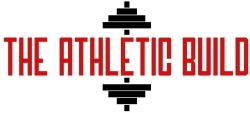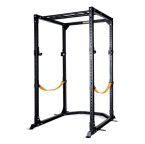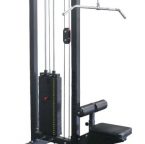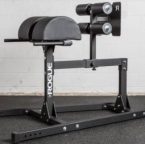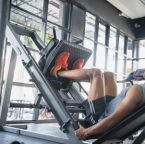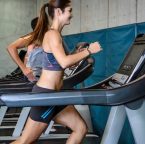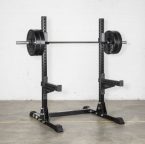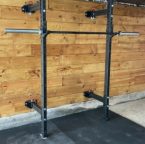Some leg days feel like a fight you’re ready to win. Other times, the thought of loading a barbell onto your back makes your spine want to file a complaint. That’s where the belt squat comes in. It lets you hammer your legs without crushing your lower back or shoulders, which means more reps, more weight, and less time icing sore joints.
The problem? Not all belt squat machines are built the same. Some are rock-solid and smooth, letting you focus on moving big weight. Others feel clunky, awkward, and will have you wondering why you didn’t just stick to lunges.
I’ve dug through the best options out there, looked at build quality, footprint, versatility, and how they actually feel in use. No fluff, no hype, just the five belt squat machines that are worth your time and money.
Top 5 Best Belt Squat Machines For Home Gym
- Best Belt Squat Machine For Money – Belt Squat Machine 2.0 By Bells of Steel
- Best High-End Belt Squat Machine – Monster Rhino Belt Squat By Rogue
- Best Belt Squat Machine On A Budget –Belt Squat Machine By Titan Fitness
- Best Over The Top Pick – Belt Squat Machine By EliteFTS
- Best Belt Squat Machine On Amazon – Commercial Belt Squat Machine By BodyKore
#1. Belt Squat Machine 2.0 by Bells of Steel
Best Value For Money
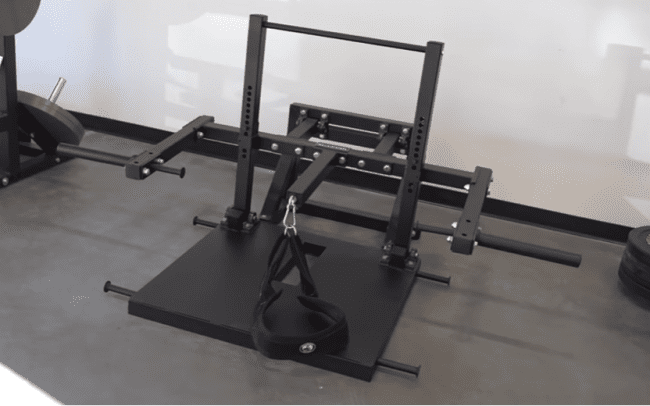
If you’ve spent any time around home gym gear, you probably already know why Bells of Steel takes our top spot. Their Belt Squat Machine 2.0 nails that sweet spot where quality meets price. It’s sturdy, it’s well-built, and it doesn’t demand you sell a kidney to bring it home.
The frame is made from 11-gauge steel with beefy connection plates, giving it a max weight capacity of 700 lbs. That’s plenty for most lifters, whether you’re chasing monster quads or just looking for a safer way to train heavy without trashing your back. The belt is no slouch either, thick, durable, and paired with two feet of chain plus dual carabiners. Even unloaded, it starts at 45 lbs, so you’re already mimicking an empty barbell before you stack a single plate.
Size-wise, it’s a friendly fit for most home gyms at 51″ x 75.4″ x 41.7″. You’re not clearing out the garage just to make room for it.
Now, the details that make it stand out. The cut-out raised footplate is clever. Lever-arm squat machines usually pull you slightly forward, but this design tucks the lever into the cut-out, smoothing out the range of motion. You also get a fixed handlebar for stability, plus top and side-loaded weight pegs to balance your load. And if you want to make things spicy, hook up the included resistance bands to add extra tension without stacking more plates.
It’s the kind of machine you buy once and keep for years. No drama, no wobble, just solid leg work every time you clip in.
- Impressively Priced (Only $1,000)
- Doesn’t Need To Be Floor Bolted (But Still Super Sturdy)
- Uses 11-Gauge Steel
- Has A Limited Lifetime Warranty
- Has Top & Side Pegs For Weights
- Reasonably Sized For Most Homes & Home Gyms
- Lever Arm Base Has A Cut-Out For A Smoother Range Of Motion
- Lever Arm Isn’t Adjustable
- Despite Cut-Out, There Is Still A Slight Forward Pull
#2 Monster Rhino Belt Squat by Rogue
Best Premium-Priced Belt Squat Machine
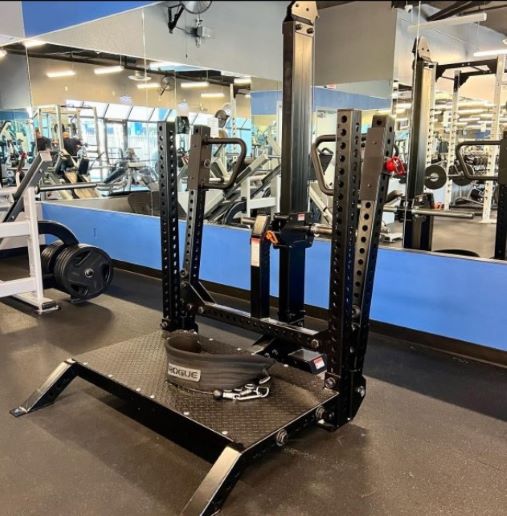
If you’re going to spend big on a belt squat machine, you want something that feels like it belongs in a pro-level gym. That’s exactly what Rogue built with the Monster Rhino.
This thing runs on a cable system, which means the movement is smoother and more natural than a lever-arm setup. And at over 500 pounds of solid steel, it’s basically a tank. I tried to rock it just to see if it would budge, nothing. No rattle, no lean, just sitting there like it was part of the building.
Despite that weight, it’s not as massive as you’d expect. The footprint is 53″ x 60.5″ x 78.5″, so it’s compact enough for most serious home gyms. Just make sure you put it exactly where you want it the first time. You’re not sliding this across the floor after leg day.
The Monster Rhino can handle up to 1,000 pounds, which is more than enough for even the most ambitious lifters. It comes with multiple adjustable handles so you can set it up for different heights or preferences. The heavy-duty belt has five D-hooks, giving you flexibility on cable attachment points. And if you want to make your sets even nastier, it’s got band pegs for adding resistance without stacking more plates.
If you’re serious about lower body training, this is one of those buy-it-once machines. It’s overbuilt, smooth, and will probably outlast you.
- Is A Cable System, Making For A Smoother Squat Movement
- Has A Weight Capacity Of 1,000LBs
- Includes Adjustable Handle Options
- Compact Size
- Comes With Premium Multi-Belt, With Various D-Hooks Slots
- Has Band Pegs For More Resistance
- Has A Limited Lifetime Warranty
- Fairly Expensive
- Needs To Be Bolted Into The Floor
- Takes A Bit To Put Together
Check Price
#3 Belt Squat Machine by Titan Fitness
Best On A Budget
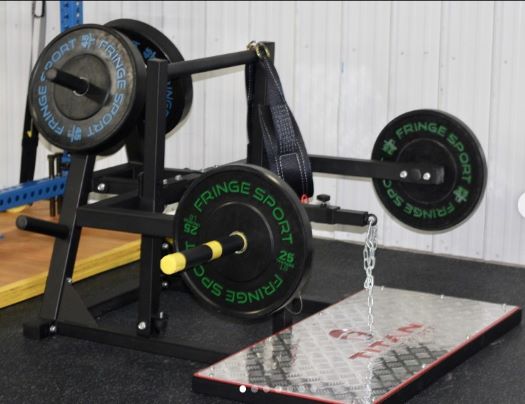
If you’ve been around our gear reviews for a while, you already know Titan Fitness shows up a lot. There’s a reason for that. They keep finding ways to make legit equipment that doesn’t crush your wallet. Somehow, they’ve pulled it off again.
The Titan Fitness Belt Squat Machine is a perfect example of squeezing the most out of every dollar. At about 700 bucks, you’d expect compromises. Instead, you get a solid, no-nonsense machine with features you usually only see on models double the price. And the footprint is friendly too. At 52″ x 83″ x 38.5″, it slides into most home gyms without forcing you to rearrange the whole setup.
It’s got three weight-stopper positions so you can dial in squat depth. Four weight-storage posts double as a counterbalance, keeping the machine planted whether you’re grinding out belt squat marches, calf raises, or going heavy on hip-belt squats.
Yeah, it’s a lever system, but don’t let that fool you. This thing handles up to 1,000 pounds, which is serious territory. That’s the kind of capacity you normally find in commercial gyms, and here it is sitting in your garage. Titan even throws in a belt with a chain and carabiners, so you can clip in and get to work right away.
For the price, for the build, for what it lets you do, this one’s a no-brainer. It’s the budget pick that doesn’t feel like a budget pick.
- Super Affordable
- Has A Weight Capacity Of 1,000 LBS.
- Includes A Weight Belt & Weight Plate Storage
- Lever Arm Is Adjustable
- Weight Doubles As A Counterbalance
- Not As Sturdy As Other Machines
- Belt Quality Isn’t Best Quality
- Shorter People May Have A Harder Time
#4 Belt Squat Machine by EliteFTS
Best Over The Top Pick
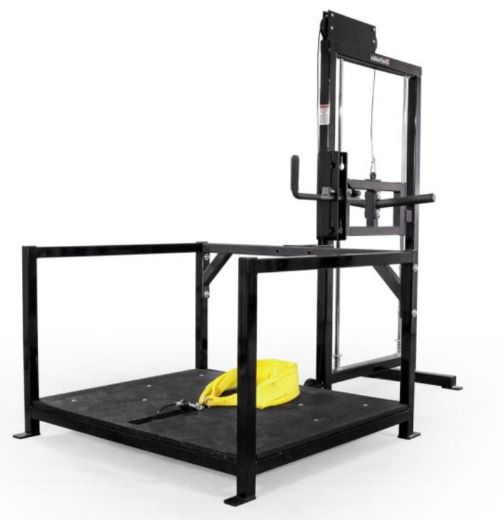
EliteFTS didn’t just slap their name on a belt squat machine and call it a day. They built something for lifters who want the absolute best and aren’t afraid to pay for it. We’re talking just under thirty-five hundred dollars. Yeah, it’s a chunk of change, but if you’re the type who wants top-tier equipment that can handle anything you throw at it, this is where you look.
It’s built big but not ridiculous, with a 54.5-inch width and 82-inch length. And you can even pick from more than eight different colors, which is a nice touch if you care about your gym looking as sharp as it performs.
What makes this thing stand out is how versatile it is. The cable system gives you a smoother, more natural squat compared to lever setups. The included squat belt is high quality, built to last, and comfortable enough to let you focus on your lift instead of fidgeting with your gear.
And it doesn’t stop at squats. You can hit pull-throughs, cable deadlifts, high pulls, Zercher squats, even seated low rows. It’s one of those rare pieces that earns its space in the gym because it can do so much, and do it all well.
If you’re building a home setup that could rival a commercial gym, this is the kind of machine that gets you there.
- Made From High-Quality Material
- Uses A Cable Instead Of A Lever Arm
- Has A Variety Of Different Colors
- A Good Size For Most Home Gyms
- Able To Perform Numerous Squat Exercises
- Is Definitely On The More Expensive Side Of Things Compared To Everything Else
- Large Footprint
#5. Commercial Belt Squat Machine by BodyKore
Best Belt Squat Machine On Amazon
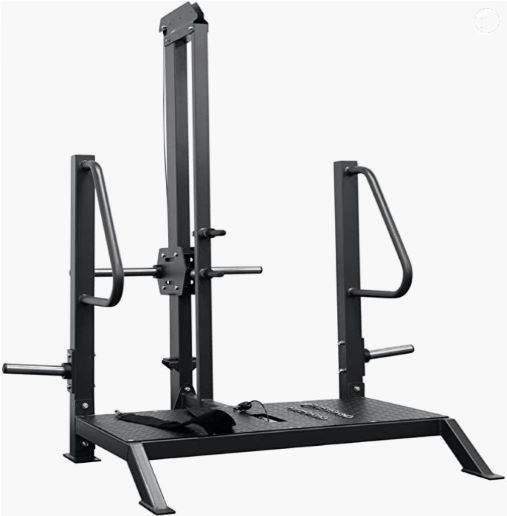
Rounding out the list is a solid pick for anyone who loves shopping on Amazon but still wants real gym-grade quality. The BodyKore Commercial Belt Squat Machine doesn’t just show up looking the part; it’s built to perform. The frame is heavy 11-gauge steel with a black powder coat that gives it a sharp, premium look. That finish isn’t just for show either. It helps protect against rust and keeps it looking new even after years of use.
This thing is no lightweight. At 341 pounds with a 1,000-pound weight capacity, it’s built to stay put no matter how aggressive you get. The footprint is on the bigger side at 66″ x 67″ x 86″, so it’s a bit more of a presence in the room, but that’s part of what makes it feel so stable.
It’s designed to be an easy alternative to hitting the gym, whether you’re a seasoned lifter or just getting into serious leg work. The belt is high quality and takes a lot of the stress off your back, so you can load up without worrying about your spine. It runs on a lever arm and comes with non-slip footplates to help deal with that forward pull lever systems can have. It doesn’t erase it entirely, but it makes it a lot more manageable.
If you want something you can order with a few clicks, roll into your gym space, and trust for years, BodyKore makes a strong case for itself here.
- 11-Gauge Steel Makes Bending Or Damaging Nearly Impossible
- Quality Belt Is Great For Back & Spine
- Machine Is Resistant To Rust & Corrosion
- Includes Non-Slip Footplates To Prevent Forward Jerk
- Very Accessible, Being On Amazon
- Construction Can Be A Bit Annoying
- Belt Does Fray After Awhile
Check Price
What Factors To Consider For A Quality Belt Squat Machine
Now that we’ve had a chance to look at some of the top belt squat machines currently out there, you may feel a bit confused about which you should get for yourself, especially since they’re all worth getting for someone. Below are a few factors you’ll want to keep in mind as you’re making a decision. That way, you’ll have a clear idea of the best squat machine for you and your home.
#1. Price
First and foremost, we need to talk about price. After all, the last thing you want to do is go over your budget and deal with the stress of feeling you paid out more than you needed to. Even if other products are nicer than what you can afford, stick to your price point. Nothing is going to be so much better that it justifies taking money from somewhere else to get it.
That said, also be reasonable. Belt squat machines aren’t cheap, and you’re going to be in for a rude awakening if you try to get something that’s too good to be true. Titan Fitness is known for offering great home gym equipment and affordable prices, and even they are selling within the $600 – $750 price range. Ideally, you want a budget right at around $1,000 – $1,300. You can go lower or go higher, but if you want the most results at the most affordable price (there are some that are $4,000), it’s worth it to stick as close to that range as possible.
#2. Size
After pricing, you’ll want to determine how much space you’ll need for your home gym. Always remember that, more than anything, you need a machine that is able to fit in the space you have available. The last thing you need is an awesome belt squat machine that you spent $2k on only for it not fit.
Take a look at your home gym space and see how much you can allot. Generally, most machines need around eight feet of width space (side to side) and five feet of depth space (back to front). Generally, the length shouldn’t be an issue unless you have low ceilings that are under eight feet. If that’s the case, you’ll want to take a look at the length (up and down) of the machine in question and square it with how far your ceilings are off the ground.
#3. Build Quality
On top of price and size, you also want to seriously take a look at what kind of material is being used. Your best bet is a belt squat machine that uses 11 gauge steel or higher. On top of that, the machine should also weigh between 200 lbs and just over 500 lbs. This means you won’t have to worry about either bent steel from too much weight or the machine itself accidentally tipping over on itself. Quality squat machines will often have a max weight capacity of between 700 and 1000lbs, again speaking to their resistance when it comes to breaking when exposed to heavy weights.
In addition to the density of the machine, you should also see if there are any add-ons like adjustable handles or racking positions as well as other things like band pegs or weight storage posts.
#4. Machine Type
Belt squat machine types are primarily based on how much you’re willing to spend. If you’re willing to spend a bit on a higher-end machine, you can opt for a cable belt, while the more budget-friendly machines will tend to be lever arms. For most people, lever arm machines are fine, though they might result in a slight pull forward. Cable belt machines don’t have that issue, making them the better option if you can afford them.
#5. Reviews
Some people may be confused about why reviews should be more important than a solid warranty. Well simply put, if people are happy with their product, a warranty isn’t necessary. Before deciding on any product, you’re going to want to take some time and go over different product reviews from various online sources. Seriously. When you consider just how much money you’re spending on this, you want to make sure you know that you’re not getting suckered in by lofty promises and enticing descriptions. The best way to have that certainty is to see the experiences other people had with that product.
As mentioned earlier, you don’t want to just go through one site either. Make a point of visiting multiple websites that sell the product to get multiple reviews. This includes online forums (like Reddit) as well as blog sites and YouTube reviews. You just want to have a firm grasp of the general consensus. It’s one thing if there’s a stray negative review amidst a ton of praise. It’s quite another to have the company singing how their machine is amazing while virtually every customer is talking about how pieces were missing and customer service sucked.
#6. Warranty
Lastly, you’ll want to make sure your belt squat machine has a good warranty. As mentioned in point #5, if the machine you’re interested in has a lot of high-marked reviews, that should come first over a warranty. After all, customers that are happy about the product don’t necessarily need to have it replaced or refunded.
Interestingly enough, however, what you’ll find is that the most highly reviewed products will have some of the best warranty options. Not only is this going to be pleasing for users to know about, but it also speaks to the quality of the product itself.
Considering you’re planning on spending a good bit of money on even the most affordable option on this list, you want to make sure there is ideally some level of protection via a warranty. It should, at the very minimum, be for one year. That said, that should only be the case if you’re choosing one of the more affordable options on this list. Otherwise, your ideal warranty should be between five to 10 years, if not a lifetime warranty.
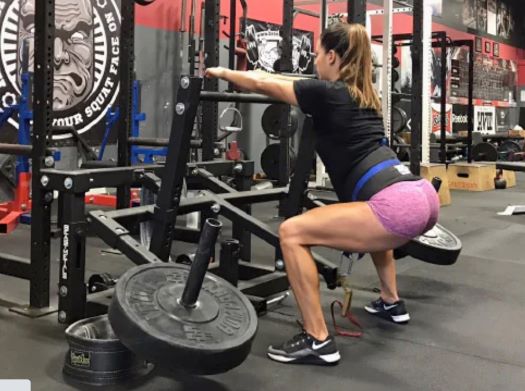
Belt Squat Machine Types
Belt squat machines aren’t all built the same. Just like with most gym gear, there are a few different styles, each with its own strengths, quirks, and trade-offs you should know before you buy.
The big three you’ll see most often are lever arm machines, cable machines, and free-weight setups.
Lever Arm Belt Squat Machines
Lever arm machines are the most common. They work off a pivot point in front of you, which keeps costs down and makes them easier to fit in smaller spaces.
That’s why you’ll spot them in more home gyms than any other type. The trade-off is that the weight sits in front of you instead of directly underneath, which can pull you slightly forward. It’s not the most natural squat pattern, but plenty of lifters still get great results with them.
Cable Belt Squat Machines
Cable belt squat machines are a different animal. The belt hooks to one side of a pulley system, with the cable running through the footplate. The weight ends up centered perfectly under you, giving you a smoother, more natural movement.
These are widely considered the gold standard, but they cost more and usually take up more floor space. If you’ve got the budget and the room, they’re hard to beat.
Free Weight Belt Squat Machines
Then there are free-weight belt squat machines. You’ll stand on a raised platform with weight plates hanging from the belt around your waist.
It’s a simple setup, but it hits your core and lower body in a big way. Just be smart about loading it; too much weight here can strain your back more easily than the other two styles.
How We Decide The Best Machines
When we put this list together, we didn’t just grab the shiniest machines and call it a day. We ran every pick through a checklist that actually matters if you’re about to drop serious cash on gym gear.
Price was a big one. Not just the number on the tag, but whether what you get feels worth it. Warranty length mattered too, because no one wants a thousand-pound paperweight six months from now. We looked at size and footprint, since a belt squat that eats your whole garage isn’t exactly practical. Then came the features, the stuff that separates a solid piece of equipment from something that just looks good online.
And we didn’t stop at specs. We dug into reviews from real users, looking for patterns. If multiple lifters were saying the same good (or bad) things, we paid attention. Sometimes you find little quirks that don’t show up in product descriptions, and that’s where the truth usually hides.
Sure, there are other machines out there that might be cheaper, more expensive, or hyped up in certain circles. But these five checked almost every box we care about. They balance performance, build quality, and usability in a way that makes them stand out, not just in one area, but across the board.
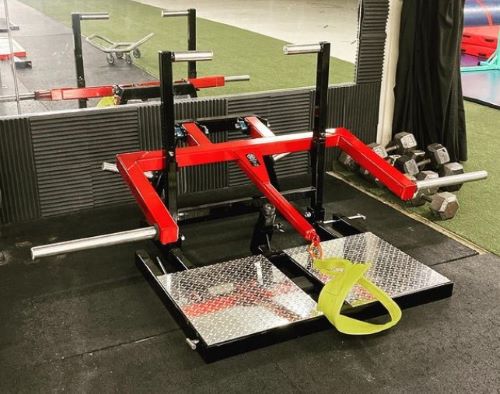
FAQs
#1. Are Belt Squat Machines Even Worth Getting?
It can be easy to question the importance of a belt squat machine. After all, it doesn’t isolate muscles the same way other workout machines do, nor does it offer results that are dramatically different from what you’d get from a barbell squat on its own.
So, if that’s true, why spend the kind of money you’re getting asked to spend? Simply put, it’s because you are getting largely the same workout as you would with a barbell squat… without risking your back. Whether you’re someone who’s already suffering from back and spinal issues or someone that simply wants to keep from wearing it out over time, belt squat machines provide that much-needed support without worrying about any later risks of injury.
Simply put, if ensuring you don’t suffer back pain later on in life is important, then a belt squat option is definitely worth your getting and worth your time when it comes to leg training.
#2. Belt Squats Vs. Standard Barbell Back Squats – Which Is Better?
Before answering this, it’s important to determine exactly what you mean by “better”. Unlike other gym machines (which tend to isolate the muscle group it’s working on) the belt squat machine focuses ultimately on the same areas as a barbell back squat and squat lift. The difference is that a belted squat relieves pressure and strain on the spine and upper body, allowing you to more effectively focus everything in your lower body.
What this ultimately means is that while standard squats do offer some marginal benefits by focusing on your core, those benefits aren’t nearly as much as with other weighted machines. Not only that, but because you’re not straining your spine, just about anyone can reasonably perform using it without risking injury. It also can result in you performing MORE lifts in a set, easily offsetting any loss you may otherwise deal with.
Ultimately, it’s difficult to decide which of the two is “better”. However, while both have their respective benefits in different areas, belt squats will lead to similar results as standard squats while having a spine and back that isn’t nearly as taxed or at risk of suffering an injury.
#3. What Squat Machine Is The Best?
Of the belt squat machines on our list, despite all of them being great in their own ways, our top pick is the Bells of Steel Squat Machine. This one offers the best overall results while at the most reasonable budget and price point.
For those that want something a bit higher-grade with better results, you’ll be better off looking at something like the Rogue Monster Rhino Belt, as it is the one seen in most commercial gyms. Not only that, but Rogue has a track record for putting out some truly remarkable equipment, with the Monster Rhino being no different. The challenge for many will be the price tag, which can be a real sticking point for those on a budget.
If you are on a budget, you’ll probably want to spend some time checking out the Titan Fitness Belt Squat Machine, which, like Bells of Steel and Rogue, has proven time and time again to produce some stellar works for the price they’re offering. It’s not going to be on the same level as either of the two options, but if you’re just getting started, and need a good beginner-priced belt machine, this is best.
Ultimately, the reason why we said Bells of Steel was the best choice all around was that they offered results that were in the same realm as what you’d get with the Rogue while selling at a price that was at least feasible for people that may be more inclined with the Titan Fitness. It really is the best of both worlds and worth considering before looking anywhere else.
Related: 11 Best Leg Press Machines on the Market
Related: Best Glute Ham Machines for Hoem Gyms
Related: 15 Best Power Racks on the Market
Benefits Of Using A Belt Squat Machine
The first thing you notice when you train on a belt squat machine is how much cleaner your form feels. You’re not fighting to stay upright or worrying about your lower back giving out halfway through a set. It’s easier to lock into the movement and keep your body where it needs to be. That matters more than most people realize, because good form is the difference between steady gains and weeks off nursing an injury.
If you’ve ever sat in a leg press and thought, “Yeah, this hits,” the belt squat is like that but more alive. Instead of pushing into a fixed platform, you’re moving in a way that feels closer to a natural squat. Your legs light up from glutes to quads, and you’re engaging muscles you didn’t know you were missing. It’s harder in all the right ways, and that’s where the strength gains start stacking.
You’ll see these machines in more and more commercial gyms now, and it’s not by accident. They let you load heavy without dumping the pressure onto your spine. For anyone with a cranky back or shoulder, that’s a big deal. You can still move serious weight, still build serious legs, and walk away without feeling like your upper body took the hit.
Conclusion
As you can see, belt squat machines, while not quite as iconic as the barbells or the more complete home gym options out there (both of which are great additions as well), they are definitely worth your time if you’re seriously considering improving your core and lower body without potentially damaging your back or spine. While, in theory, unassisted standard squats will always be the ideal, even trained professionals understand that the benefit offered doesn’t outweigh the potential issues you’re likely to have, especially if you’re not a professional.
Though they haven’t been a super popular item in the past, more and more lifters are realizing that they’re seriously worth looking at regardless of your gym experience. By jumping on them now, before the craze starts to set, you’re not only getting them at their best price, but you’re also giving yourself a serious head start over all of your gym buddies on who has the sweeter quads and glutes.

Ryan is a former college wrestler and lifelong fitness fanatic with over 25 years in the industry. He’s run half marathons, tackled mud runs, placed in body transformation contests, and coached everything from wrestling to girls’ soccer.
Along the way, he’s tested hundreds of supplements and built a deep well of supplement knowledge. His work has appeared in Muscle & Strength, Testosterone Junkie, The Sport Review, and more. Today, he’s the editor-in-chief of this site, still training hard and helping others reach their goals. Connect with him on LinkedIn below.
